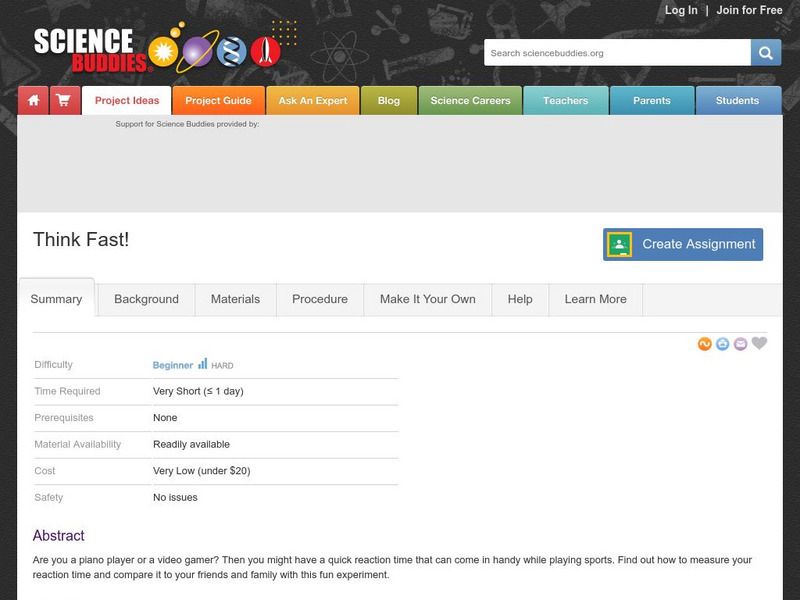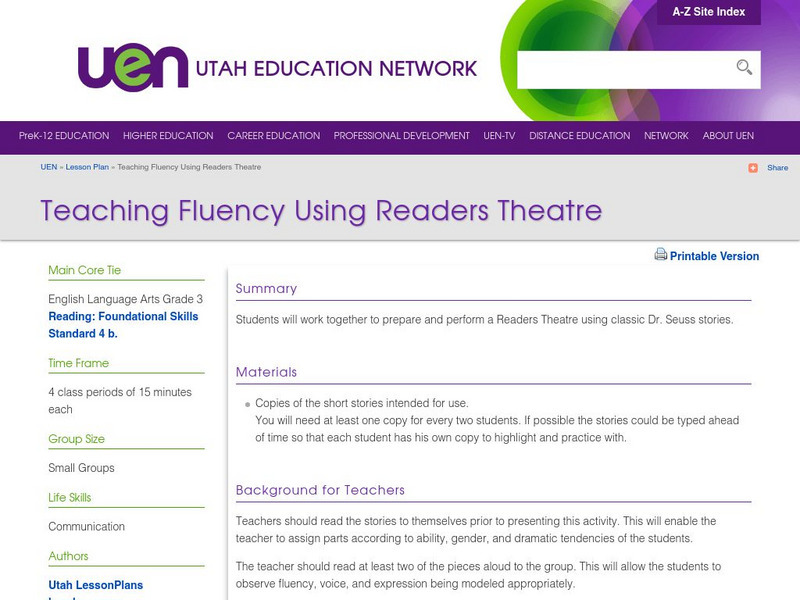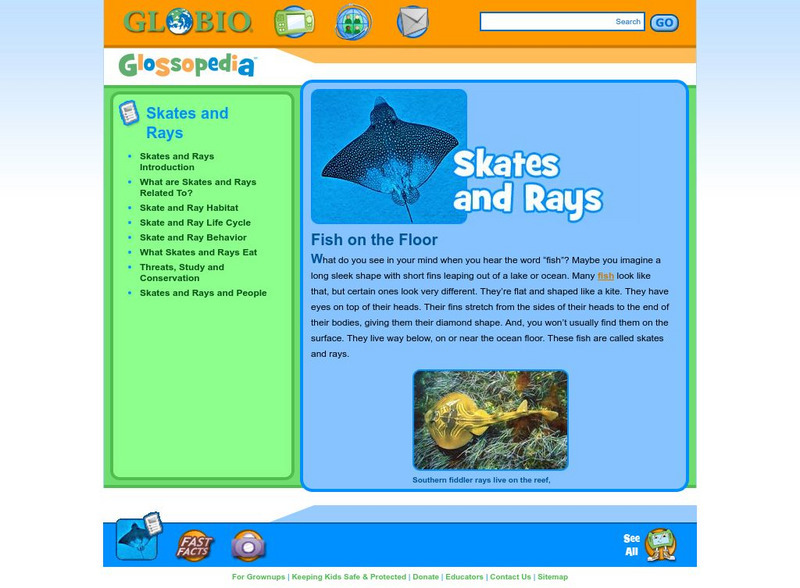Science Buddies
Science Buddies: Think Fast!
Are you a piano player or a video gamer? Then you might have a quick reaction time that can come in handy while playing sports. Find out how to measure your reaction time and compare it to your friends and family with this fun experiment.
Utah Education Network
Uen: Teaching Fluency Using Reader's Theater
This lesson engages students in fluency stories related to Dr. Seuss' stories. Students will engage in reading these texts with meaningful phrases, intonation, and expression. The Sneetches, Yertle the Turtle, Gertrude McFuzz, What Was I...
Enchanted Learning
Enchanted Learning: Missouri
This site has a colorful display of information about Missouri. It contains a map, pictures, a list of state symbols, and links to related information.
Enchanted Learning
Enchanted Learning: Nebraska
This site has a colorful display of information about Nebraska. It contains a map, pictures, a list of state symbols, and links to related information.
Enchanted Learning
Enchanted Learning: Wyoming
A colorful display of information about Wyoming. Contains a map, pictures, a state symbols list, and links to related information.
Globio
Glossopedia: Stars
Many of the objects you can see in the night sky are stars, large objects in space that produce light. Our galaxy, the Milky Way, contains more than 100 billion stars. Stars are so far away that their light does not reach us for years....
Globio
Glossopedia: Skates and Rays
There are more than five hundred different species of skates and rays in our oceans. Scientists say that these fish are closely related to sharks, sharing a common ancestor from around 400 million years ago. This article provides an...
Globio
Glossopedia: Chocolate
Chocolate begins as a seed of the tropical cacao tree. It has been a prized taste sensation for more than 2,500 years. One reason chocolate is so nice to eat is that it melts just below body temperature. So it really does melt in your...
Utah Education Network
Uen: Sun or Shade?
Use a thermometer to measure the air temperature in several places around the school.
Utah Education Network
Uen: Trb 3:3 Investigation 1 Push and Pull
Understand the effect of the forces of push and pull on motion.
Utah Education Network
Uen: May the Best Force Win
The greater the force applied to an object, the greater the change in speed or direction of the object.
University of Illinois
University of Illinois Extension: The Great Plant Escape: Soiled Again
Help Detective Le Plant dig for clues in the soil to solve this case. You'll need to find out what soil is, why it is important, and in what kinds of soil plants grow.
Utah Education Network
Uen: Third Grade Writing Lesson #2 / Science Prompt
Third graders will invent a gadget using one or more simple machines and write about it.
PBS
Pbs Learning Media: The Columbian Exchange
In this interactive lesson supporting literacy skills, students watch video dramatizations that tell the story of the Spanish explorers who arrived in the Americas with Columbus and introduced European, African, and Asian plants and...
Other
The Happy Scientist: What Is a Food Web?
A food web is a way of seeing how energy is transferred from organism to organism. All living things need energy. They use it to move, to grow, to reproduce. That energy has to come from someplace. Drawing a food web is a great way to...
Other
Port Discovery Children's Museum: Stem at Home: How to Diy Cloud in a Bottle
Do you ever wonder what happens when a cloud gets too full? Find out in this easy and fun experiment.
Marilyn J. Brackney
Imagination Factory: Soda Straw Weaving
Using plastic straws and yarn, young children can weave a bracelet or bookmark. Website includes detailed instruction on how to weave using soda straws and images showing the various steps.
Exploratorium
Exploratorium: Bubbularium
What colors do you see in a bubble? Why do you see colors in a bubble? Use this site to find out the answer to these questions with this easy experiment.
Exploratorium
Exploratorium: Outrageous Ooze
Students can make ooze and learn about different qualifications of matter. An easy procedure is provided to make gooey ooze that you can play with when you are done.
Exploratorium
Exploratorium: Salt Volcano
By making oil float on water--with the help of other ingredients--students can create a lava-lite effect.
Exploratorium
Exploratorium: Hoopster
Students create their own airplane using straws and other materials and learn the principles of aerodynamics.
Exploratorium
Exploratorium: Roto Copter
Students can experiment with a home-made helicopter that lets them change the blades to see how real aerodynamics work.
Library of Congress
Loc: Everyday Mysteries: Why Do Bats Live in Caves?
Ever wonder why bats live in caves? Or why bats don't fly into objects at night? This article describe why bats thrive in the protected shelter a cave provides. It also explains how bats use echolocation to locate food and avoid obstacles.
Colonial Williamsburg Foundation
The Colonial Williamsburg Foundation: Pardon or Pillory
Guess the letters in the words to save the colonist from the pillory. This play on hangman reviews historical vocabulary.



















